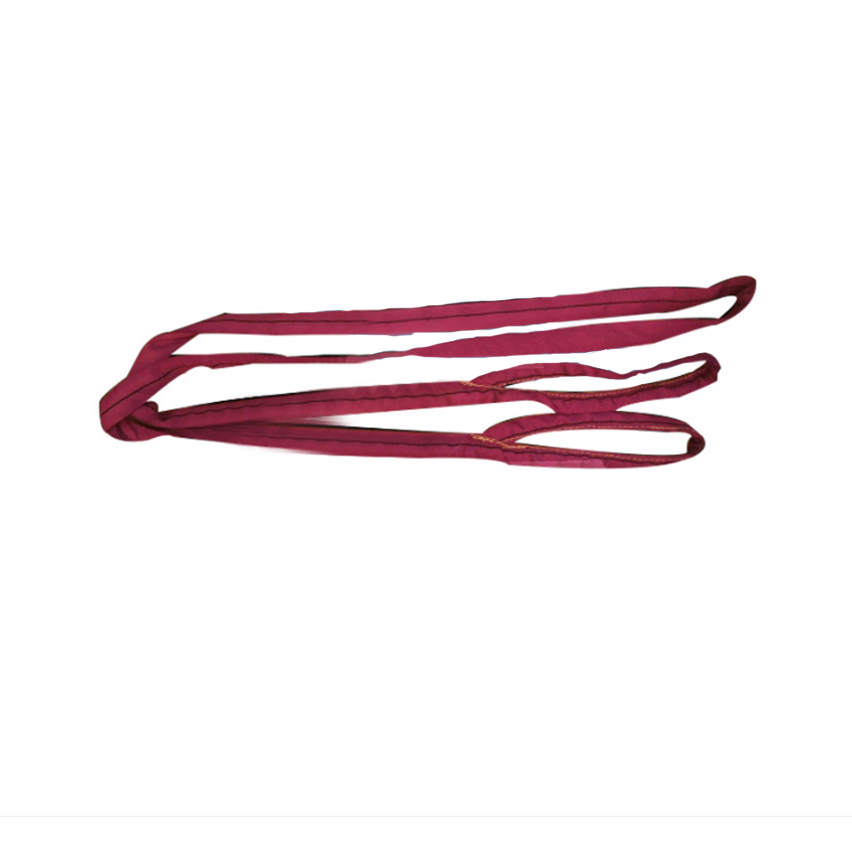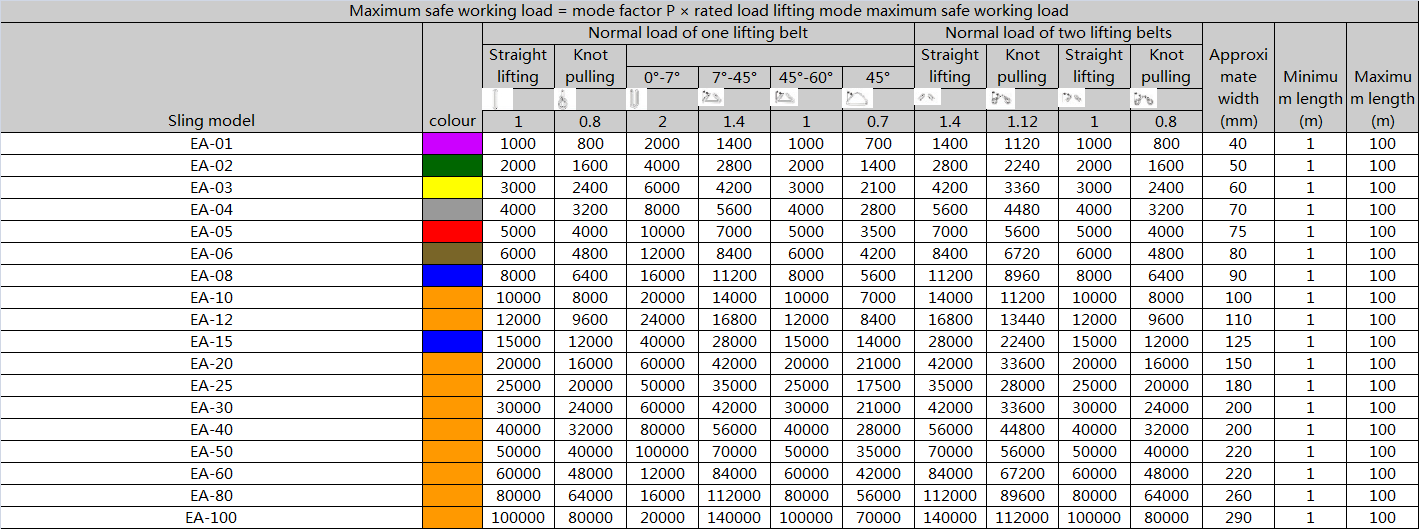Precautions for sling
1 The specifications marked on the label of the lifting sling are exactly the same as those listed on the certificate.
Before each use, check whether the lifting sling is defective, and ensure that there are clear signs and labels, and the sling that cannot identify the technical specifications can never be used.
2 When using the lifting sling, the given limit working load must be considered, the lifting mode, and the nature of the load must be considered to correctly select the specifications of the lifting sling. The use of overload is strictly prohibited.
3 The lifting sling can be used in acidic working environment, but not in alkaline working environment. Lifting slings should be tested for lifting. The loose part of the lifting sling should be pulled up until it is tight. Lift the load a little bit and check whether the load is tied tightly and matches with the place to be placed.
4 The lifting device in contact with the eye must be smooth without any sharp edges. The length of the eyelet shall not be less than 3.5 times the maximum thickness of the lifting device. At the same time, the angle formed within the eyelet shall not exceed 20 ° under any circumstances.
Please observe the following measures during lifting:
1 Do not tow when moving the lifting slings and cargo; never use it in a knot, and do not twist it when carrying it; it must not be damaged by cutting, friction, or abrasion of the sharp edges and corners of the load. At the same time, strengthening the protection of the label does not allow the lifting sling to hang the cargo for too long; when the cargo stays on the sling, the lifting sling must not be pulled out from the load state;
Avoid impact loads.
2 After each use, a full-length surface inspection of the sling should be performed, and any defects found should be dealt with in a timely manner.
3 The lifting slings should be stored in a clean, dry, well-ventilated place, avoid being close to corrosive items, away from high-temperature heat sources, and avoid direct sunlight and ultraviolet radiation.
Circular / flat lifting sling (synthetic fiber) general scrap standard (reference)
1 In use, the hoisting belt (including the sheath) has serious wear, cutting fracture, perforation and tearing.
2 The load-bearing seam is open and the sewing thread is worn and disconnected.
3 The fiber surface is rough and easy to fall off.
4 Excessive point-like looseness, acid-alkali burns, corrosion, heat melting and scorching appear on the surface of the lifting belt.
5 Softening, aging, weakening of the fibers of the hoisting belt, and the decrease in elasticity.
6 Lifting slings are knotty.
7 The security cord with the security cord sling appears to be leaking.



